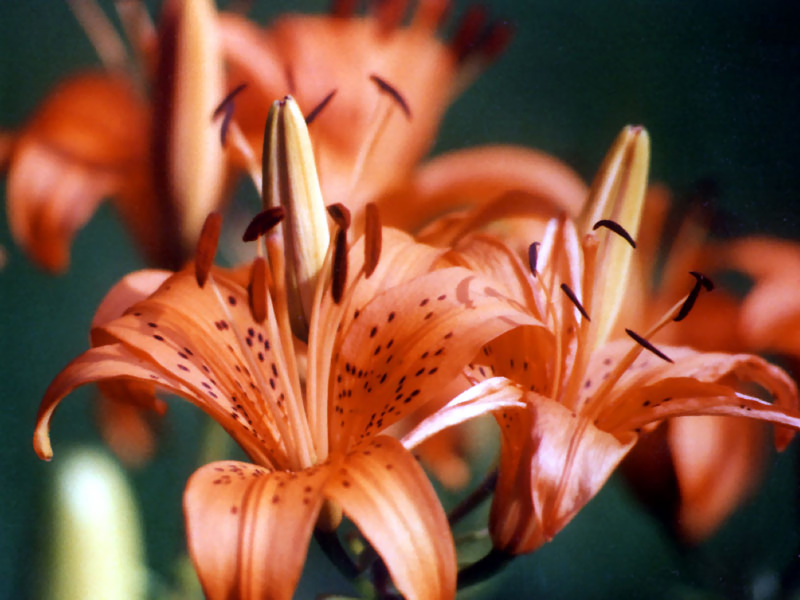Creating a Succulent Garden
Posted on 22/03/2025
Succulent gardening has become increasingly popular due to its blend of aesthetic appeal and low maintenance requirements. These hardy plants, known for their thick, water-storing leaves, thrive in a variety of environments, making them a versatile option for both indoor and outdoor spaces. By understanding the basics of succulent care, you can create a lush, visually stunning garden that is both sustainable and easy to maintain.
Why Choose Succulents?
Succulents attract many gardening enthusiasts due to their unique appearance, wide variety of shapes and colors, and resilience. These plants are particularly suitable for individuals with busy lifestyles or those new to gardening, as they require minimal attention.
- Diversity: Succulents come in a plethora of forms, from tall aloe plants to small, rosette-shaped echeverias. This diversity allows for creative garden designs.
- Low Maintenance: They require less frequent watering compared to other plants, making them ideal for arid regions or individuals looking for low-care gardening options.
- Adaptability: Succulents can thrive in various containers and garden settings, from traditional pots to vertical gardens and terrariums.

Planning Your Succulent Garden
Creating a successful succulent garden starts with thoughtful planning. Here are key considerations to keep in mind:
1. Location Selection: Choose a spot that receives ample sunlight, as succulents require at least six hours of direct sunlight daily. For indoor gardens, select a south-facing window or consider using grow lights.
2. Soil Requirements: Use well-draining soil to prevent root rot. Special cactus or succulent soil mixes are recommended. You can also create your own mix by combining regular potting soil with sand or perlite.
3. Garden Layout: Design your garden according to the space available. Opt for a cohesive look by grouping succulents with similar care needs or contrasting colors and textures for a more dynamic appearance.
Planting Your Succulents
Planting succulents can be straightforward if done correctly. Follow these steps:
1. Prepare the Soil: Ensure your soil mix is well-draining. Fill your chosen containers with the soil mix, leaving space for root expansion.
2. Spacing: Succulents need adequate space for airflow and growth. Depending on the species, space plants 2-4 inches apart in containers and about 6-12 inches apart in outdoor gardens.
3.Planting: Gently remove the succulent from its nursery pot, loosen the roots, and place it in the new soil. Cover the roots with soil and lightly press down.
4. Watering: After planting, allow the succulents to adapt by withholding water for a few days. Gradually introduce a watering schedule, ensuring the soil is completely dry between watering sessions.
Caring for Your Succulent Garden
Though succulents are low-maintenance, they need some care to thrive. Here's how to maintain a healthy garden:
1. Watering Schedule: Overwatering is a common mistake. Water your succulents sparingly, only when the soil is dry to the touch. Frequency can vary based on climate and location, but generally, once every two weeks is sufficient.
2. Sunlight: Ensure your succulents get plenty of bright, indirect sunlight. Some species can tolerate direct sunlight, so research the specific needs of your plants.
3. Pest Control: Although rare, succulents can suffer from pests like aphids, mealybugs, or spider mites. Inspect your plants regularly and treat infestations accordingly, using insecticidal soap or natural remedies.
4. Fertilizing: Feed your succulents during their growing season (spring and summer) with a balanced, water-soluble fertilizer diluted to half strength. Avoid over-fertilizing, as this can damage the plants.
Pros and Cons of a Succulent Garden
Pros:
- Low Maintenance: Requires less frequent watering and minimal care.
- Aesthetic Appeal: Wide variety of shapes, sizes, and colors.
- Adaptability: Can thrive in various environmental conditions.
- Water Efficiency: Ideal for areas with water restrictions or drought conditions.
Cons:
- Sunlight Requirement: Needs ample sunlight, which may not be ideal for certain indoor spaces.
- Pest Issues: Can still attract pests despite being generally pest-resistant.
- Cold Sensitivity: Many succulents are sensitive to frost and extreme cold.
Helpful Tips for Starting Your Succulent Garden
1. Start Small: Begin with a few easy-to-care-for succulents and expand as you gain confidence.
2. Monitor Growth: Regularly check the health and growth of your plants, adjusting care routines as necessary.
3. Label Plants: Keep track of different species and their specific care requirements by labeling them.
4. Use Appropriate Containers: Ensure containers have drainage holes to prevent water accumulation.
5. Seasonal Adjustments: Modify your care routine seasonally, reducing watering in winter when growth slows down.

Takeaways on Succulent Gardening
- Succulents are versatile, low-maintenance plants perfect for busy individuals and beginners.
- Planning is crucial; choose a sunny location, use well-draining soil, and design your garden layout thoughtfully.
- Proper planting and care ensure the longevity and health of your garden.
- Understand the pros and cons before starting your succulent garden to set realistic expectations.
- Utilize helpful tips to overcome common challenges and optimize growth.
Conclusion
Creating a succulent garden is a rewarding and enjoyable project that offers numerous benefits. With their striking appearance, minimal upkeep needs, and adaptability, succulents are an ideal addition to any home or outdoor space. By following the guidelines on planning, planting, and maintenance, you can cultivate a thriving succulent garden that brings beauty and tranquility to your environment.




